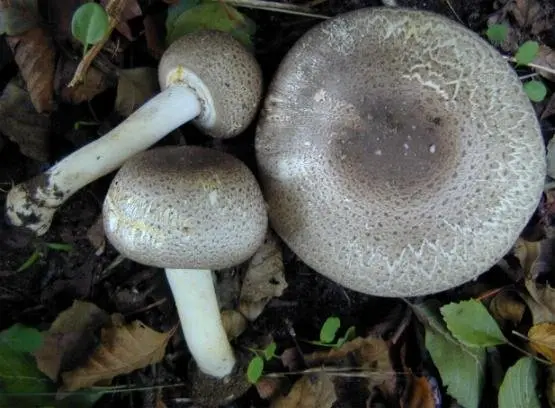Mushroom (Agaricus placomyces)
- Division: Basidiomycota (Basidiomycetes)
- Subdivision: Agaricomycotina (Agaricomycetes)
- Class: Agaricomycetes (Agaricomycetes)
- Subclass: Agaricomycetidae (Agaricomycetes)
- Order: Agaricales (Agaric or Lamellar)
- Family: Agaricaceae (Champignon)
- Genus: Agaricus (champignon)
- Type: Agaricus placomyces

Description:
The cap is 5-9 cm in diameter, ovoid in young specimens, then spreading to flat, with a small tubercle in the center. The skin is dry, white or grayish, covered with many small grayish-brown scales, merging into a dark spot in the center.
The plates are free, frequent, slightly pink in young mushrooms, then gradually darken to blackish-brown.
The spore powder is purple-brown. Spores are elliptical, 4-6×3-4 microns.
Leg size 6-9×1-1.2 cm, with a slight tuberous thickening, fibrous, with a rather steep ring, in young mushrooms connected to the cap.
The flesh is rather thin, whitish, turns yellow when damaged, later turning brown. The smell of varying degrees of intensity, often clearly unpleasant, “pharmacy” or “chemical”, is similar to the smell of carbolic acid, ink, iodine or phenol.
Spread:
It occurs, as a rule, in autumn in deciduous and mixed forests, sometimes near habitation. Often forms “witch rings”.
The similarity:
The flat cap mushroom can be confused with the edible wild mushroom Agaricus silvaticus, the flesh of which has a pleasant smell and slowly turns red when damaged.
Evaluation:
The mushroom is declared inedible in some sources, slightly poisonous in others. It is best to avoid eating as it can cause gastrointestinal distress in some people. Symptoms of poisoning appear quite quickly, after 1-2 hours.









